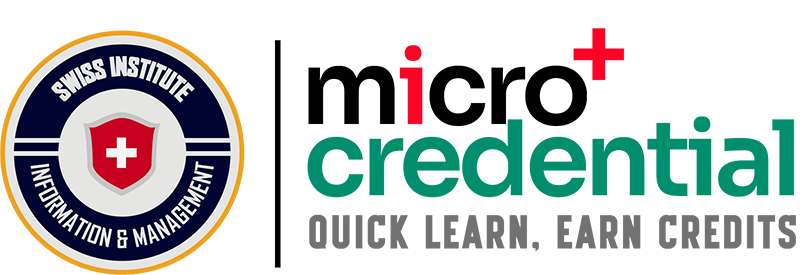Level 3 Award
in Design Technology
Level 3 Award could transfer 20 credits and full tuition fees to Level 3 Diploma programs of SIMI Swiss.

Level 3 Award in Design Technology
The aim of this award is for learners to understand the development of approaches for solving design problems and the selection of appropriate materials. This unit also enables the learner to develop the skills and knowledge in computer aided design (CAD), in terms of producing 2D drawings.
Could transfer 20 credits and full tuition fee to the Level 3 Diploma in Engineering of SIMI Swiss.
Learning Outcomes:
1. Demonstrate knowledge and understanding of engineering products and design.
-
1.1 Discuss the triggers that stimulate engineering design activity.
-
1.2 Evaluate commercial, regulatory or public policybased trends that challenge current technology or design.
-
1.3 Discuss sustainability issues in product design process.
2. Understand how to apply a systems approach to electrical design.
-
2.1 Explain with examples the systems approach to electrical and electronic design.
-
2.2 Explain the applications, function and operation of a range of input and a range of output devices.
3. Be able to produce 2D CAD drawings.
-
3.1 Set drawing parameters on the CAD system.
-
3.2 Explain the reasons for using structured layers and how they are created.
-
3.3 Explain the function of the commands used in producing 2D CAD drawings.
-
3.4 Produce 2D CAD drawings that contain essential technical information.
Topics:
Demonstrate knowledge and understanding of engineering products and design.
Course Coverage
-
The triggers that stimulate engineering design activity, including:
-
market pull/technology push (product and process)
-
demand
-
profitability
-
innovation
-
market research
-
product/process performance issues
-
sustainability (carbon footprint)
-
designing out risk
-
-
Design challenges
-
reduction of energy wasted during design of an engineered product
-
reduction of energy wasted during operation of an engineered product
-
reduction of physical dimensions
-
reduction of product mass
-
increase in component efficiency
-
energy recovery features
-
reduced product life cycle costs
-
integration of different power sources for vehicles
-
reduced use of resources in high-value manufacturing
-
designing out risk (for individual employees and customers).
-
-
Sustainability issues throughout the product life cycle (raw materials, manufacture, packaging and distribution, use and reuse, end of life)
2. Understand how to apply a systems approach to electrical design.
Course Coverage
-
How to apply a systems approach to electrical design i.e.
-
open and closed loop
-
input, process and output
-
feedback
-
development of system block diagrams
-
-
Function, application and operation of input devices i.e.
-
switches (i.e. latched and momentary action)
-
photodiode
-
phototransistor
-
LDR
-
NTC thermistor
-
microphone
-
-
Function, application and operation of output devices, i.e.
-
piezo-electric buzzers/sounders
-
lamp
-
Light Emitting Diode (LED)
-
LED 7 segment display
-
Dot matrix display
-
Liquid Crystal Display (LCD) display module
-
solenoid
-
relay
-
speaker
-
Be able to produce 2D CAD drawings.
Course Coverage
-
Parameters: limits to suit component dimensions and paper size, drawing aids to draw entities accurately (grid spacing, snap interval, object snap mode, orthogonal mode, units benefits and limitations of using the drawing aids).
-
Layers: apply meaningful names, assign line types, assign colours, control the visibility of layers.
-
Commands: line, polyline, circle, arc, polygon, rectangle, ellipse, doughnut, erase (single entities, multiple entities).
-
Technical information: projection type (pictorial: isometric, oblique; orthographic: first angle, third angle) units, scale, shape, size including tolerance, surface finish, number off, material requirements, special treatment.
-
Conventions: BS 8888, types of line representation of common features.
Indicative reading list
-
Gindis, E. and Kaebisch, R.C. (2021). Up and running with AutoCAD 2021: 2D and 3D drawing, design, and modeling. London, United Kingdom: Academic Press, An Imprint of Elsevier.
-
Hamilton, S. (2007). An analog electronics companion: basic circuit design for engineers and scientists and introduction to SPICE simulation. Cambridge: Cambridge University Press.
Entry requirements
- Applicants must be at least 16 years old.
- Completion of full secondary education is required.
English requirements
If a learner is not from a predominantly English-speaking country, proof of English language proficiency must be provided.
- Common European Framework of Reference (CEFR) level B2 or equivalent
- Or A minimum TOEFL score of 101 or IELTS 5.5; Reading and Writing must be at 5.5 or equivalent
- Or A minimum Pearson Test of English Academic (PTE Academic) score of 51 or equivalent
The SIMI Swiss reserves the highest decision-making power for admission whether to accept or not accept after a specific review of each candidate’s profile to ensure that they can comprehend and gain benefits when participating. For the fake university or diploma mills, University Partners shall not be accepted.
After graduating with Level 3 Award, students receive all certified documents from the SIMI Swiss.
Certified Documents:
- e-Certificate from the Swiss Information and Management Institute (SIMI Swiss).
- Hard copy certificate from the Swiss Information and Management Institute (SIMI Swiss) – Optional.
- Accreditation of Prior Experiential Learning for Qualifications (APEL.Q) certified from SIMI Swiss for credit and tuition fee transfer.
Because the program is accredited and recognized, students can easily use certified in the working environment and have many opportunities for career advancement. In addition, in case if you want to study for a SIMI degree or university partner degree, students can convert all credits and the full paid tuition fee.
The SIMI Swiss’ Level 3 Award means:
The SIMI Swiss Level 3 Award is a qualification at the foundational level and is equivalent to the following:
- Level 3 Certificate of the Regulated Qualification Framework (RQF) in the UK
- Level 6 Certificate of the Scottish Credit and Qualifications Framework (SCQF)
- Level 3 Certificate of the Credit and Qualifications Framework for Wales (CQFW)
- Level 3 Certificate of the European Qualifications Framework (EQF)
- Level 4 Certificate of the Australian Qualifications Framework (AQF)
- Level 3 Certificate of the ASEAN Qualifications Reference Framework (AQRF)
- Level 4 Certificate of the African Continental Qualifications Framework (ACQF)
Students can convert all credits and the full tuition fee when participating in the SIMI Swiss and/or University Partners academic programs if they want to study for an academic degree.
Credits transfer:
Learners can accumulate 20 credits from the Level 3 Award program when participating in the Level 3 Diploma program. Please see the credit transfer policy HERE
Tuition fee transfer:
When participating in the Level 3 Diploma program, students who have graduated 1 Level 3 Award will receive a discount of full tuition fee which you paid. Please see the tuition fee transfer HERE
The SIMI Swiss micro-credential program allows for the transfer of credits and tuition fees into full degree programs from SIMI Swiss and/or its university partners. SIMI Swiss reserves the right to limit admissions once the number of students exceeds the quotas.
Apply Policy:
- To participate in the SIMI Swiss micro-credential program, students need to meet the entry criteria corresponding to each level. Please see the “Entry” tab for more details.
- SIMI Swiss will not accept applicants if their entry qualifications are from diploma mill universities or schools/universities that are not accredited.
- English is not a mandatory entry requirement for Micro Credential programs, but candidates need to ensure that English is used in reading documents, listening to lectures, and doing assignments. Candidates should note that English is a mandatory requirement when switching to an academic program at SIMI Swiss and University Partners.
Apply Process:
- Choose the program that suits your requirements.
- Email your application to support@simiswiss.ch with all the required documents. You can download the application form here.
- Our admission department will contact you and guide you through further processes if the registration documents need to be supplemented.
- SIMI Swiss will issue the Letter of Acceptant (LOA). You wil proceed to the next steps according to the instructions and pay tuition fee.
- SIMI Swiss will issue a student confirmation letter, login account to the e-learning system and related documents.
- You have become an official SIMI Swiss student and enjoy your study journey.
The SIMI Swiss micro-credential program is fully online, allowing you to study anytime, anywhere. You have the option to attend live classes with SIMI Swiss. The final exam will be uploaded to the system and evaluated by the academic panel of SIMI Swiss. Students must submit assignments on time; failure to do so will result in the student being considered to have discontinued the program.
Pricing Plans
Take advantage of one of our non-profit professional certified programs with favorable terms for your personal growing carreers.
- Full online videos
- e-Books
- Self-study contents
- Online tutor videos
- Assignment guide
- e-Certificate
- Hard copy certificate
- Accreditation & Recognition certified from University Partners
- Deliver hard copy certificate and all certified documents to your home
- Transfer full credits & tuition fees to equivalent academic programs
- Get more support tuition fees and scholarships when becoming SIMI' international students
- (*) In the event that you receive a scholarship or discount, the fee you should transfer is the amount you actually paid.
SWISS MICRO CREDENTIAL
Contact us
If you interested this micro credential course, please feel free to contact with us! Please note that this program is a not for profit and learning with full online model.
